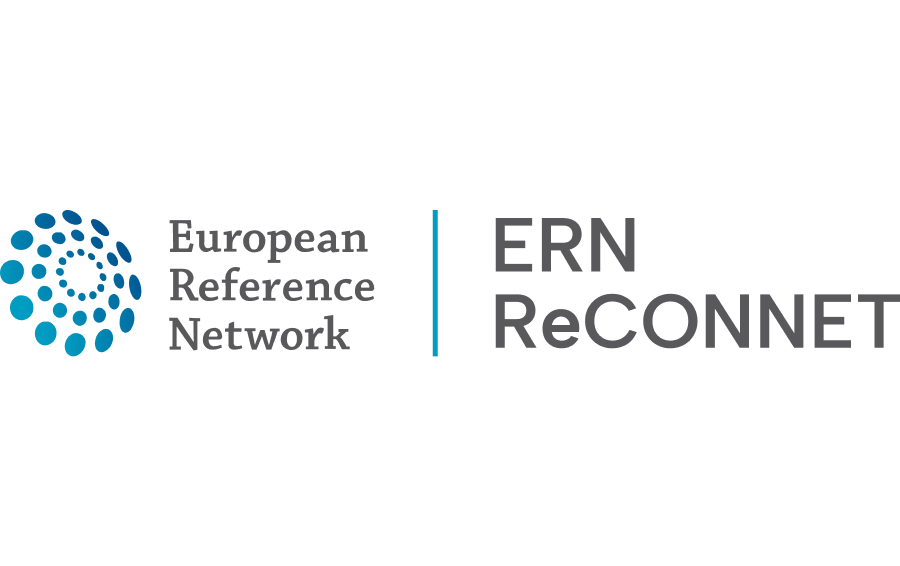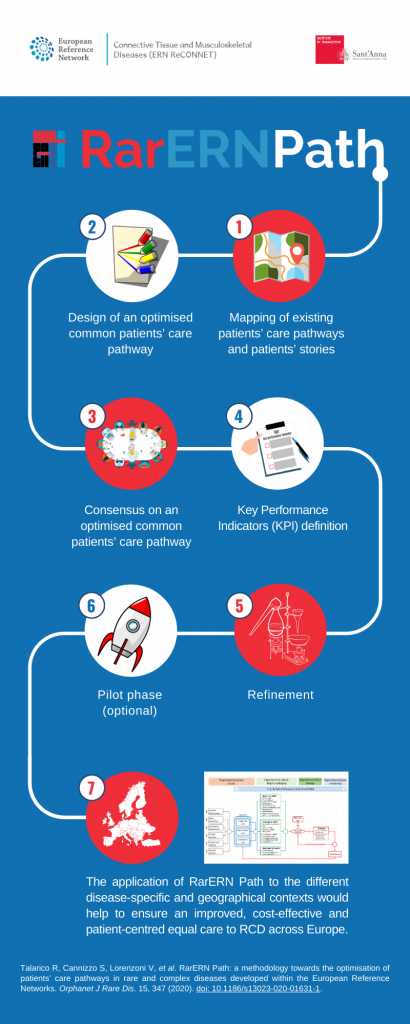ERN ReCONNET
Activities
RarERN Path
RarERN Path
The RarERN Path methodology aims to create a single reference organisational model for patients’ care pathways which, if applied in different contexts, helps to ensure an improved, cost-effective and patient-centred equal care to rare and complex diseases.
Starting from existing standard methods for the creation and elaboration of patients’ care pathways, a specific methodology was created in order to take advantage of the distinctive and peculiar characteristics of the ERNs. Specifically, the development of the RarERN Path methodology involved different stakeholders: health economists, clinicians and researchers expert in rare and complex diseases, communication experts, experts in patients’ involvement and narrative medicine and policy-makers.
The RarERN Path methodology foresees six consecutive phases, each with different and specific aims. Specifically, the six phases are represented by:
- Phase 1— Mapping of existing patients’ care pathways and patients’ stories
- Phase 2— Design of an optimised common patients’ care pathway
- Phase 3— Consensus on an optimised common patients’ care pathway
- Phase 4— Key performance indicators definition
- Phase 5— Refinement
- Phase 6— Pilot phase (optional).
The application of RarERN Path to the different disease-specific and geographical contexts would help to ensure an improved, cost-effective and patient-centred equal care to rare and complex diseases across Europe as well as a possible tangible action towards the integration of ERNs into the different European healthcare systems.
Scientific Publications
An Opportunity to Harmonise the Approach to Patients’ Care Pathways for Rare and Complex Diseases: RarERN Path™
Rosaria Talarico, Diana Marinello, Sara Cannizzo, Ilaria Palla, Simone Ticciati, Andrea Gaglioti, Andrzej Rys, Carlo Milli, Domenica Taruscio, Marta Mosca e Giuseppe Turchetti
Front. Health Serv. 2:935014. doi: 10.3389/frhs.2022.935014
RarERN Path: a methodology towards the optimisation of patients’ care pathways in rare and complex diseases developed within the European Reference Networks
Rosaria Talarico, Sara Cannizzo, Valentina Lorenzoni, Diana Marinello, Ilaria Palla, Salvatore Pirri, Simone Ticciati, Leopoldo Trieste, Isotta Triulzi, Enrique Terol, Anna Bucher and Giuseppe Turchetti.
Orphanet J Rare Dis. 15, 347 (2020). doi: 10.1186/s13023-020-01631-1




